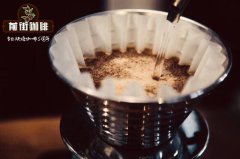What does coffee bean G1 mean? Ethiopian coffee grade G1 is a highly selected beauty.

Professional coffee knowledge exchange more coffee bean information please follow the coffee workshop (Wechat official account cafe_style)
Qianjie-introduction of coffee bean grading system in Ethiopia
The definition of the grade of Essex coffee is complicated.
Ethiopian coffee is sold through the trading system of the Ethiopia Commodity Exchange (ECX).
By providing a secure and reliable end-to-end commodity processing, grading and storage system, ECX ensures the matching of quotations and bids for commodity transactions, as well as a risk-free payment and delivery system, and finally settles transactions, ensuring the security required by all commodity market participants in the market, while serving everyone fairly and effectively.
The way ECX deals with coffee goes something like this: first, farmers sell coffee berries to local washing plants, some of which pay higher prices for better quality coffee berries. The washing plant will send the processed raw beans to the warehouse of the delivery station.
Before the advent of ECX, for washed coffee, the export grade was G1 and G2; for sun-cured coffee, the export level was G3, G4, G4, G5, which means that the highest level of sun exposure was G3.
After the emergence of ECX, there is a redefinition of classification, and there is no difference in the classification name of washing, while the definition of sunlight appears G1 for the first time, which is why there are now Ethiopian sunburn G1 and G2 on the market, while G3 begins to decrease slowly.
Washed beans Grade1 represents 3 defective beans per 300g of raw beans.
Grade2 stands for 412 defective beans per 300g.
Hand-picked defective beans-
Of course, in fact, the defective bean standards of sellers and buyers are certainly different, but the comparison of defect rates is still easy to tell. G1 has significantly fewer defective beans than G2, which means that Ethiopian G1 coffee beans are better than G2 coffee beans, excluding the specific flavor and roasting degree, at least in terms of defective flavor.
Knowledge: the coffee grading of most coffee-producing countries is not carried out according to one standard, but not only to examine the defect rate, but also to ensure the size of beans, but also to measure the grade of beans by multiple standards such as a certain altitude.
In short: Qianjie is a coffee research hall, happy to share the knowledge about coffee with you, we share unreservedly just to make more friends fall in love with coffee, and there will be three low-discount coffee activities every month. The reason is that Qianjie wants to make more friends drink the best coffee at the lowest price, which has been Qianjie's tenet for 6 years!
END
Important Notice :
前街咖啡 FrontStreet Coffee has moved to new addredd:
FrontStreet Coffee Address: 315,Donghua East Road,GuangZhou
Tel:020 38364473
- Prev

Is the coffee grade AA the best? Kenya coffee beans are graded strictly and the best quality is selected.
Professional coffee knowledge exchange more coffee bean information please follow the coffee workshop (Wechat official account cafe_style) front street-Kenya coffee bean grading system introduction Niya coffee bean grading standard I shared 2016coffeereview's TOP30 list mentioned before, Kenya has been on the list seven times, but also has been with its wonderful flower and fruit aroma and good sweetness and just right mellow
- Next

How to classify coffee beans A brief introduction to the classification standard of Ethiopian defective beans
Professional coffee knowledge exchange more coffee bean information please follow the coffee workshop (Wechat official account cafe_style) front street-defective bean classification system this is the earliest classification method, the main representative countries that use the defective bean proportion method are Ethiopia, Indonesia and so on. Indonesian beans are mainly divided into six grades, namely G1~G6. Ethiopian coffee beans are graded with 300g coffee beans.
Related
- Beginners will see the "Coffee pull flower" guide!
- What is the difference between ice blog purified milk and ordinary milk coffee?
- Why is the Philippines the largest producer of crops in Liberia?
- For coffee extraction, should the fine powder be retained?
- How does extracted espresso fill pressed powder? How much strength does it take to press the powder?
- How to make jasmine cold extract coffee? Is the jasmine + latte good?
- Will this little toy really make the coffee taste better? How does Lily Drip affect coffee extraction?
- Will the action of slapping the filter cup also affect coffee extraction?
- What's the difference between powder-to-water ratio and powder-to-liquid ratio?
- What is the Ethiopian local species? What does it have to do with Heirloom native species?

